A day with one ballpark visit is a good one. But what about a day with two ballparks? Or even three?
I’ve had several two-ballpark days over the course of my travels, but had a rare chance to visit three different parks in one day on May 10 of last year. I bookended the day with a Greensboro Grasshoppers matinee game at First National Bank Field and a Charlotte Knights evening game at Truist Field. In between, I had a chance to visit World War Memorial Stadium in Greensboro. The historic ballpark is a little over a mile from First National Bank Field, making it an easy stop for any fan who’s in town to see the Grasshoppers.
World War Memorial Stadium opened in 1926. Its name pays tribute to World War I — it would be another 13 years before World War II began. Throughout its history, it’s been the home field of many minor league teams and one Negro Leagues club. Many future major leaguers played on this field. Perhaps most notably, future hall of famer Derek Jeter suited up for the Greensboro Hornets in 1992 and 1993 at the ages of 18 and 19, respectively. (His teammates on those teams included Jorge Posada, Andy Pettite, and Mariano Rivera.) In 139 total games, the eventual New York Yankees captain had 161 hits for a .292 batting average — but also struggled mightily at shortstop, with 65 total errors in 554 chances.
The ballpark last hosted affiliated baseball during the 2004 season. Currently, it’s the home field for the North Carolina A&T Aggies, an NCAA Division I team that plays in the Coastal Athletic Association.
I pulled into the World War Memorial Stadium parking lot a little before 12:30 p.m. and saw a couple of other vehicles. But strangely, I didn’t encounter anyone else during my visit. Here’s a look at the stylish triple-arched entrance of the ballpark:
As you might’ve noticed in the photo above, there was nothing preventing me from entering the ballpark, so that’s exactly what I did after spending a couple of minutes perusing the exterior. I particularly enjoyed the curved outer wall of the park; the shape offered an immediate vintage feel:
I also paused to check out a plaque to the right of the entrance, which paid tribute to the local residents who lost their lives in WWI. The plaque reads, “1917-1919. Duty, Honor, Country Well Done. Be Thou at Peace.” Interestingly, there were 35 names in alphabetical order, a scratched-out section, and five more names in alphabetical order, as you can see here:
I was curious about the reason for the scratched-out line and did some online digging. It turns out that the plaque originally read “Colored” on this line, thus dividing the list into white and Black members of the armed forces.
Vowing to spend a little more time outside the park before I left, I next entered through the arched entrance. Although the park had somewhat of a run-down appearance, there were indicators that it was still in use. This colorful banner was proof of that:
Interestingly, only two Aggies have ever made it to the big leagues, as per Baseball Almanac. Tom Alston was an Aggie from 1949 to 1952 and went on to be the first Black player to ever suit up for the St. Louis Cardinals. The Greensboro native played in 91 games for the Cardinals between 1954 and 1957, hitting .244. The other Aggie, Al Holland, played at A&T from 1972 to 1975 and eventually had a 10-year MLB career with the Pirates, Giants, Phillies, Angels, and Yankees. He was an NL All-Star in 1984.
As I stood in front of the banner in the photo above, I took a look to my right and saw this scene:
The corridor didn’t exactly look inviting, and I had the thought of, “Literally no one knows my current whereabouts. I think I will not wander down this corridor and see what may or may not be lurking at the end of it.” (That’s a thought I’ve had a few times on various adventures on my travels, now that I think of it.)
Instead, I ventured out toward the field, which proved to be a theoretically safer option and certainly a prettier one. A moment later, this was my view:
A lot better, right?
I slowly turned 360 degrees and looked for an indicator that someone else might be here — someone working on the field or doing maintenance on the ballpark, for instance — and still didn’t see anyone. Here was the view directly behind me:
And here are some of the seats to the left of where I stood …
… and to my right:
Standing here made it feel as though I’d stepped back in time. While there were some modern-day touches — a plastic commercial garbage bin with City of Greensboro lettering on the side, for example — much of the park looked as though I expect it would have appeared several decades ago.
One sign of life was the batting cage, which appeared to be in good shape:
If you look beyond the cage to the outfield fence, you’ll see “NC A&T” and “AGGIES” lettering, offering a reminder that the park is indeed still in use.
Next, I made my way along the cross-aisle behind the third base dugout, where I took a look at this walkway that presumably led to some sort of picnic area:
I love the look of the old bricks on either side of the walkway. Amazing!
The cross-aisle opened up just past the dugout and gave the area a nice, open feel. I can imagine that even on a crowded night during the ballpark’s heyday, it would have been easy to move through the seating bowl:
As for the dugout itself, it was very modest — a wooden bench sitting on brick posts, some freestanding metal benches in foul territory, and a few sections of fence to offer a modicum of protection. The one surprising feature was the small water fountain; I don’t know if I’ve ever seen this type of hydration option available in a dugout:
Here’s a look at the dugout from a different angle, showing its proximity to home plate and also offering a look at the seating in the vicinity:
I spent a few more minutes walking around the cross-aisle before deciding to exit the ballpark and take a lengthy look around its perimeter. (I’d have loved to stay a lot longer, but I needed to soon get on the road to Charlotte.) An opening in the fence in right field gave me this view of the park:
Of course, I also thought I’d take a few minutes to see if I could find a baseball in this area. I quickly noticed one in a little stream that Google Maps unceremoniously identifies as “Muddy Creek.” I didn’t want to fish the ball out, so I continued walking around the underbrush — pausing for a moment to wonder what venomous snakes might be present in North Carolina – and eventually found this baseball:
It had evidently been there for quite some time. Not only was it heavy with water, but it also had a foul odor that made me hurriedly reach for my hand sanitizer once I returned to my rental car. I was glad to find the baseball, but it wasn’t one that I wanted to add to my collection.
See the gate in the background of the photo above? Here’s a better look at it:
The barbed wire, dangling power lines, and “All Weapons Prohibited” sign gave the gate something of an unnerving look. Honestly, I might’ve initially guessed that I was standing outside of a scrapyard rather than an NCAA ballpark. While there were a few areas of the park that had a bit of a run-down appearance, most of it looked just plain old — and there’s certainly beauty in buildings of this age. I wished that I had been able to visit for an actual game. Maybe one day, right?
After a bit more walking around the perimeter of the ballpark, I returned to the parking to find that it contained more vehicles than earlier:
Still no sign of people, though! So bizarre.
A moment after taking the photo and enjoying a last look at World War Memorial Stadium, I hopped into my car and began the 90-minute drive to Charlotte for that evening’s Knights game.
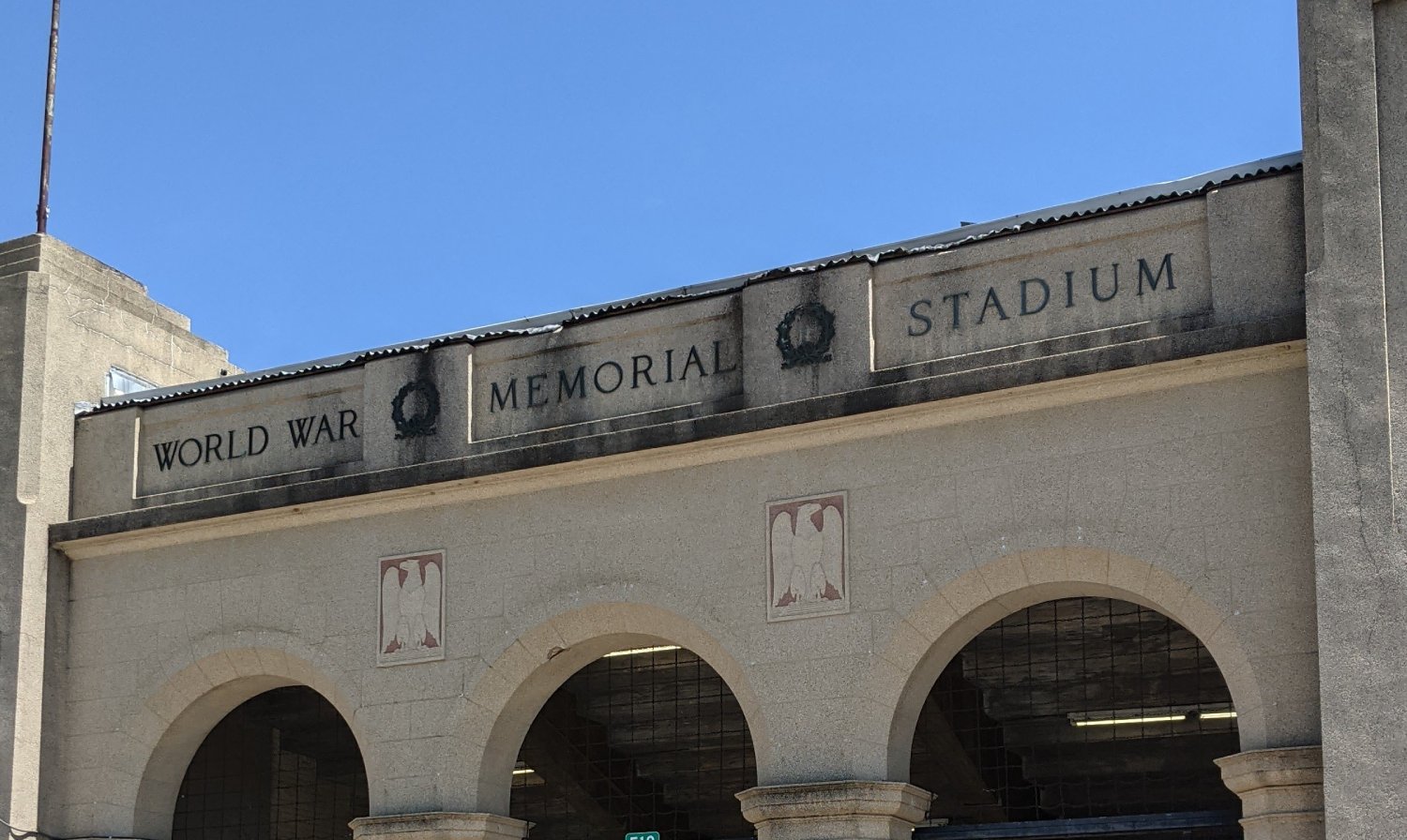
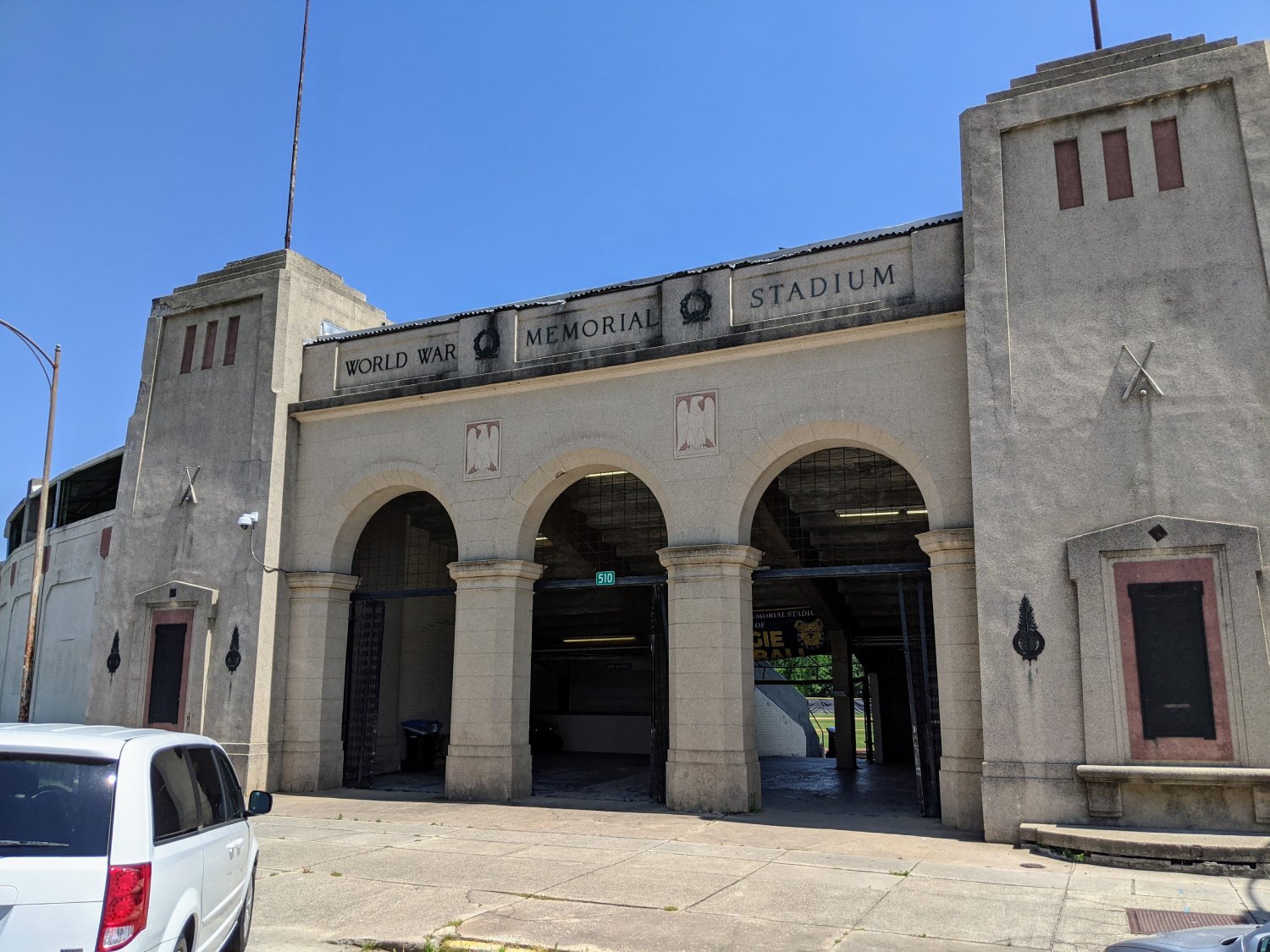
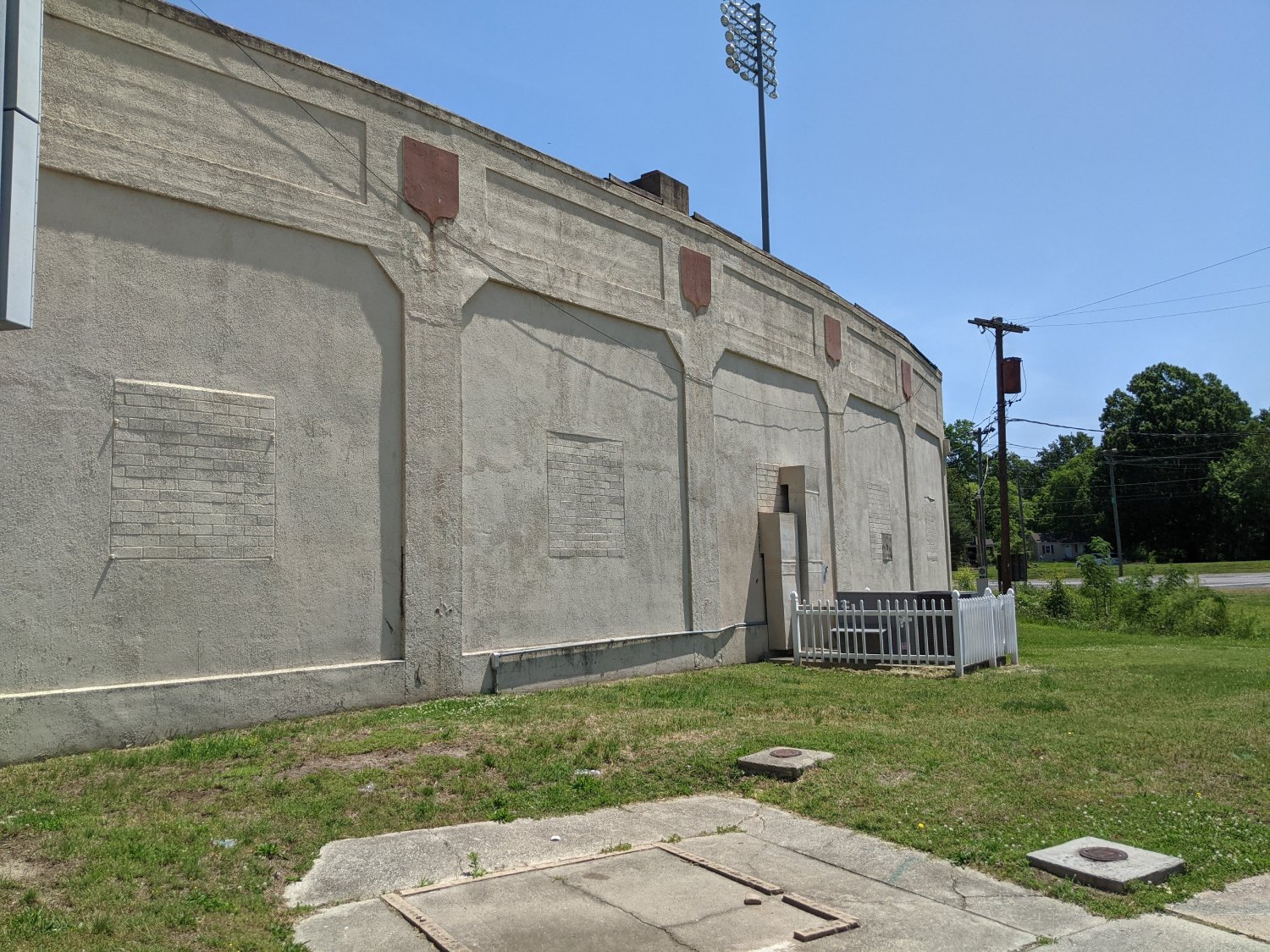
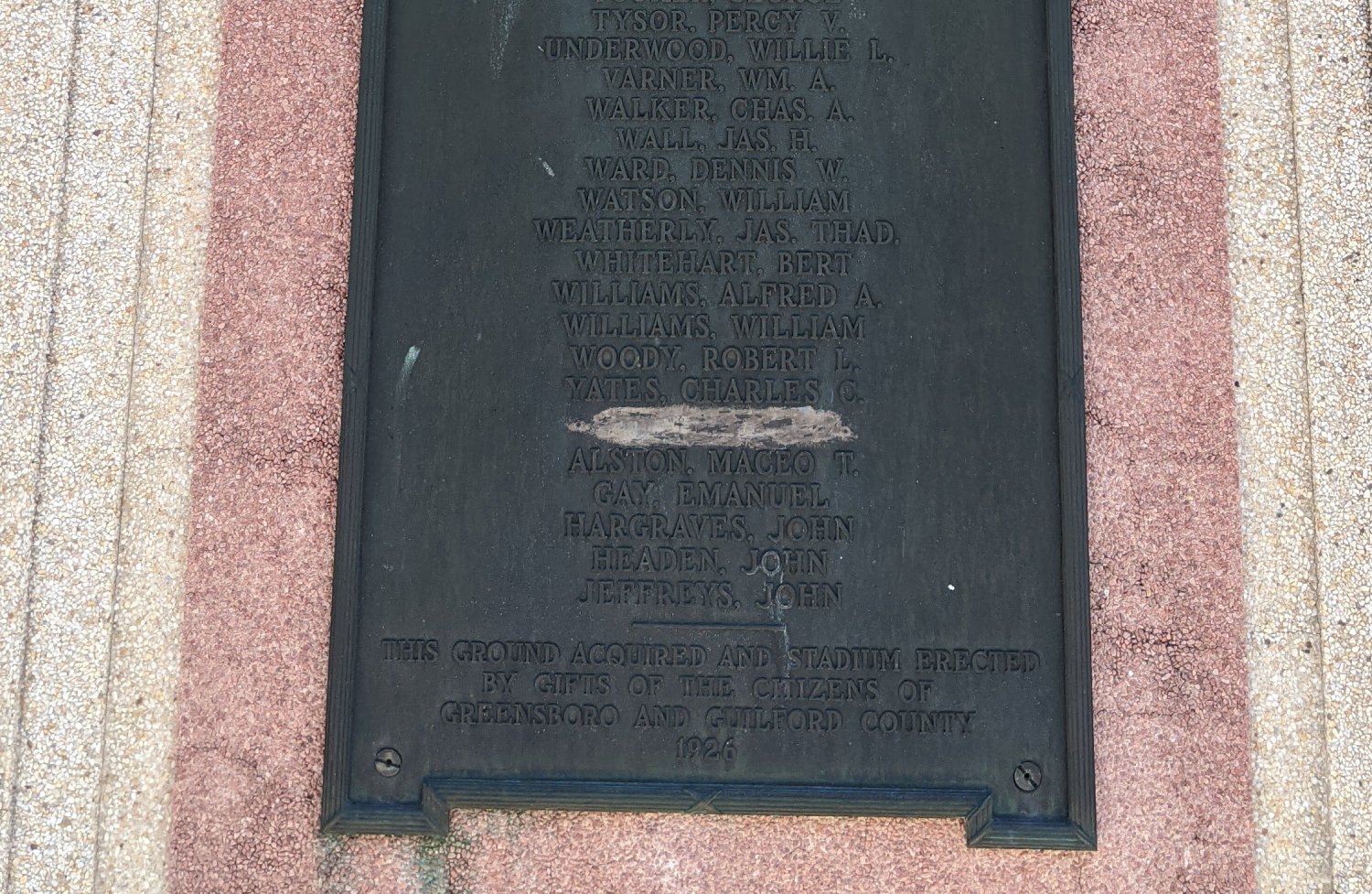
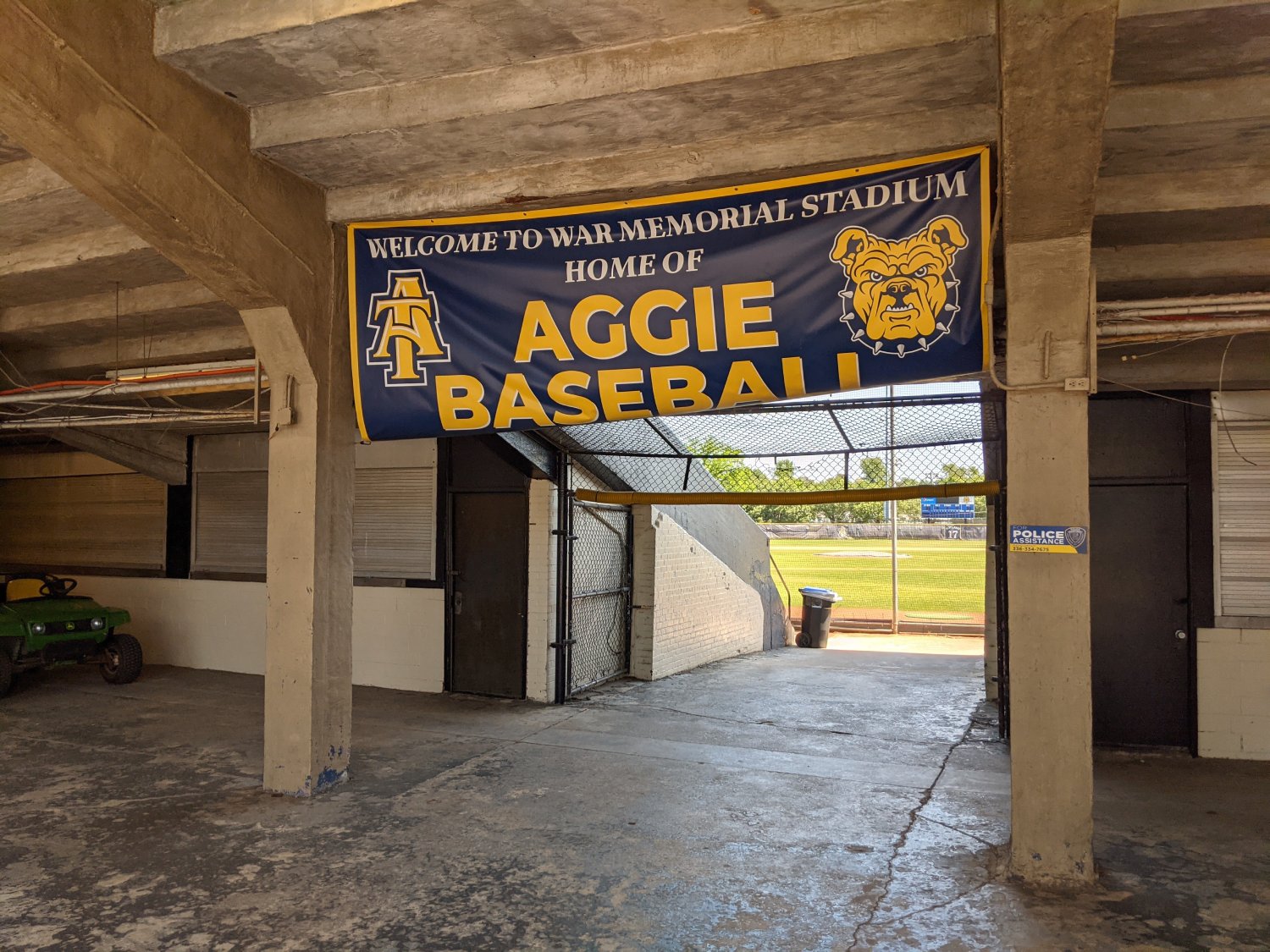
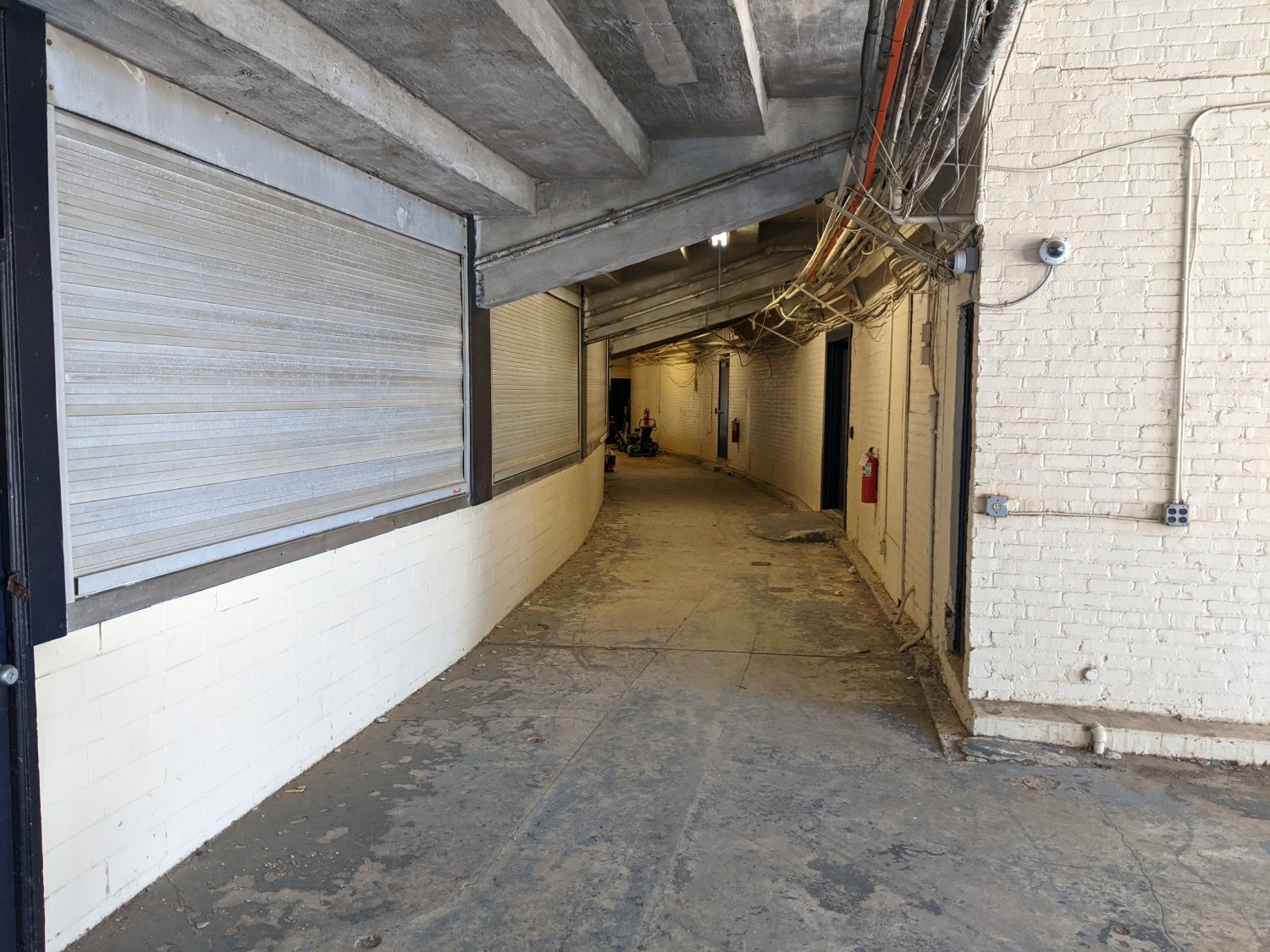
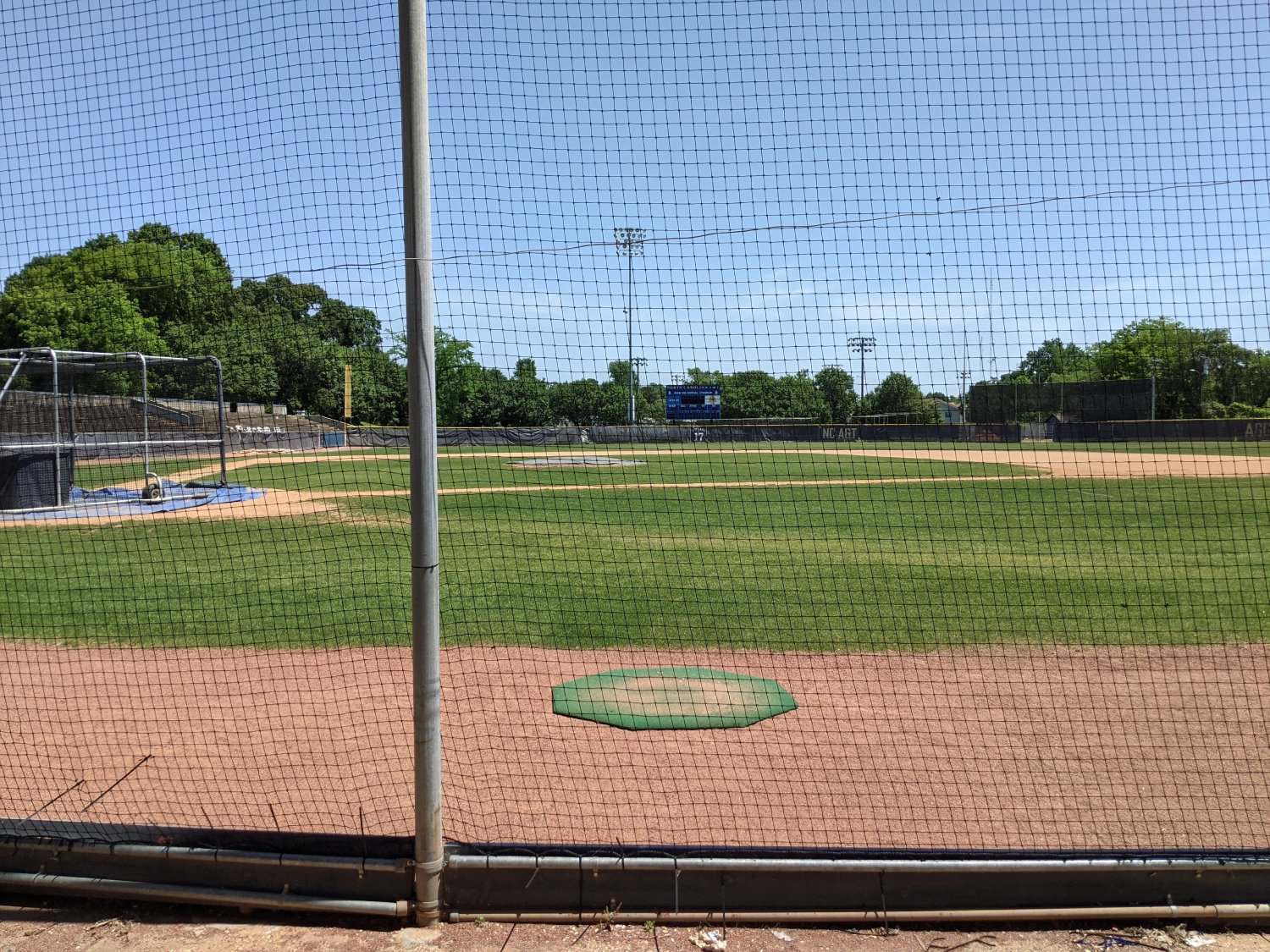
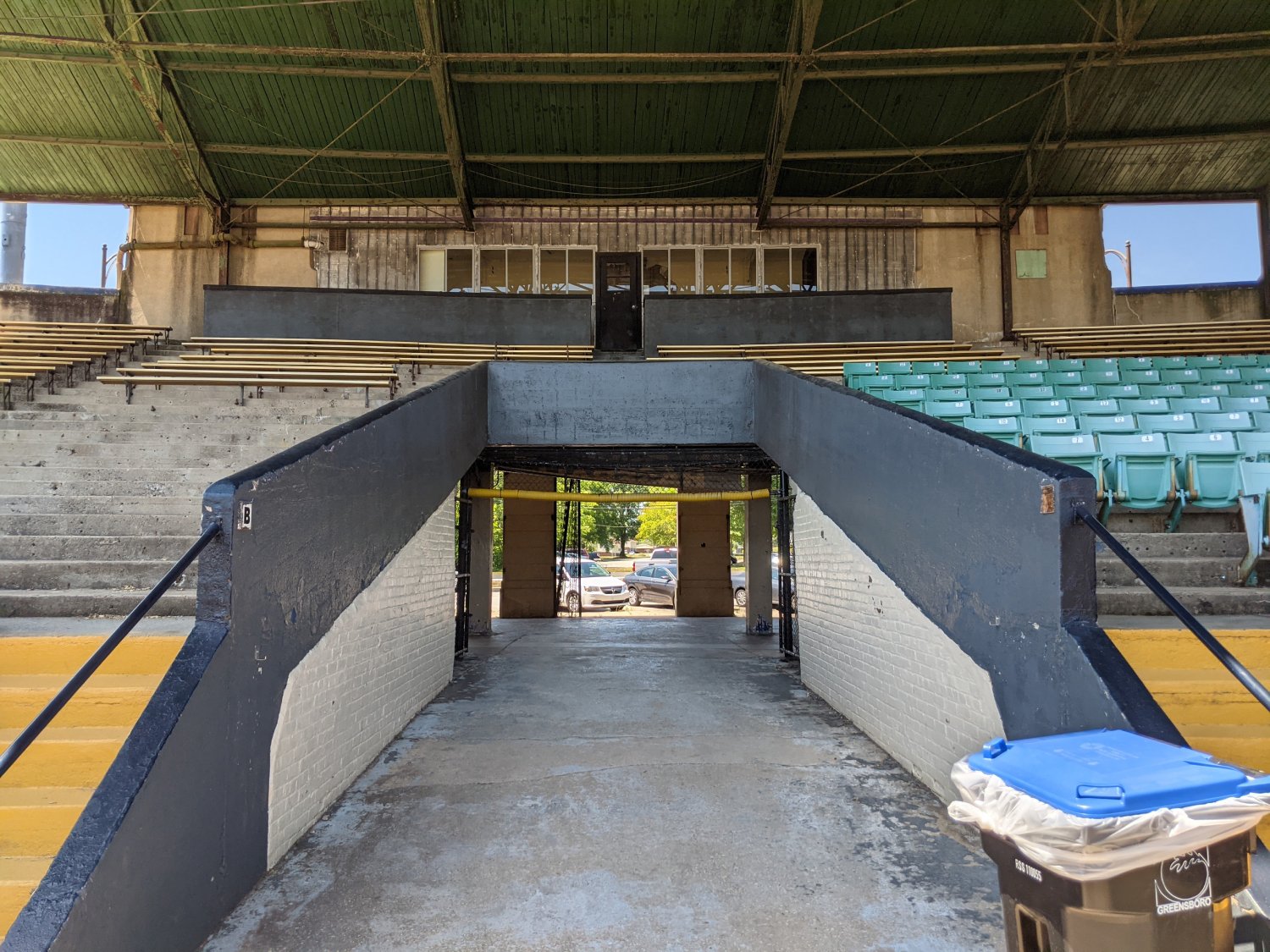
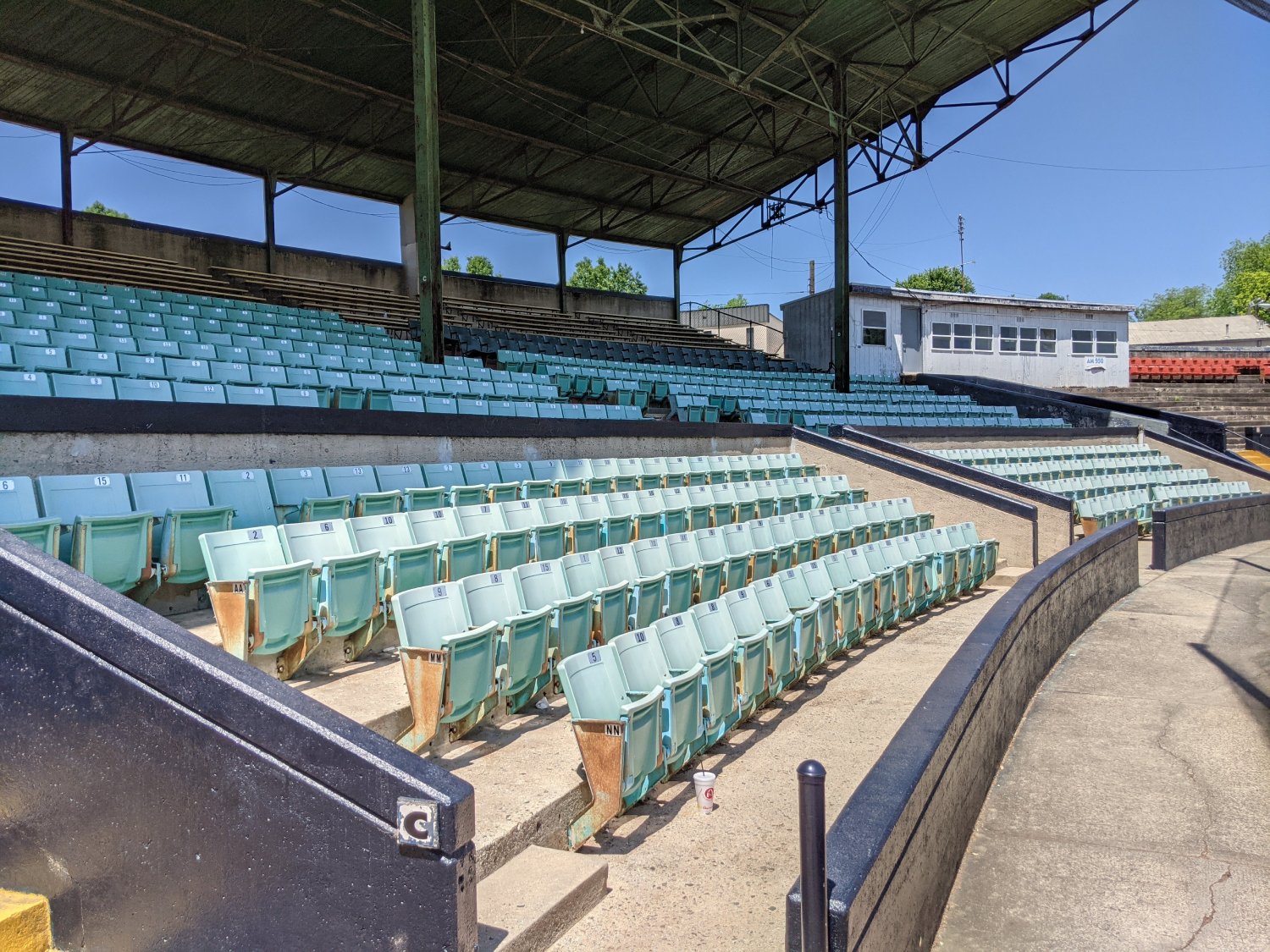
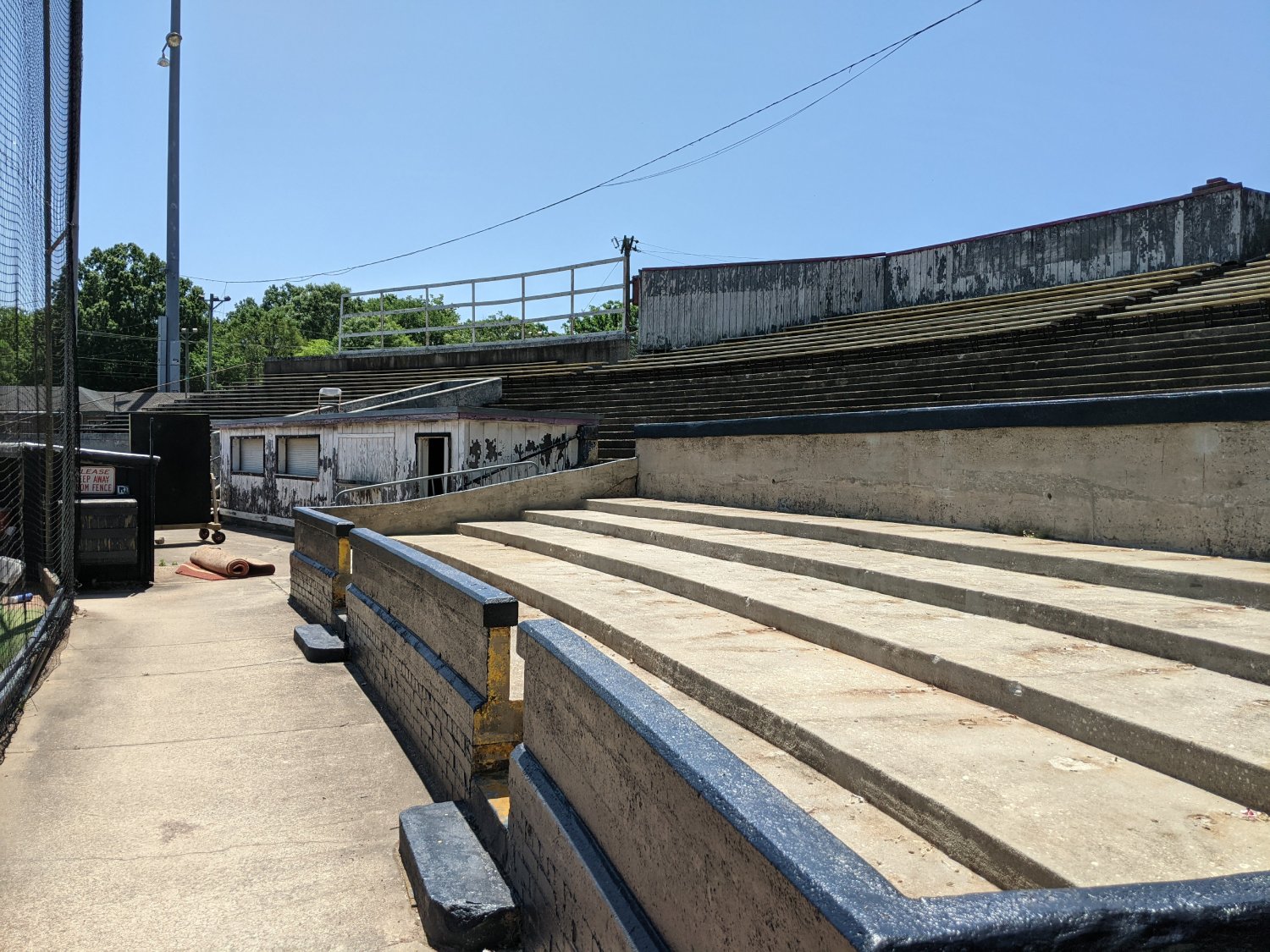
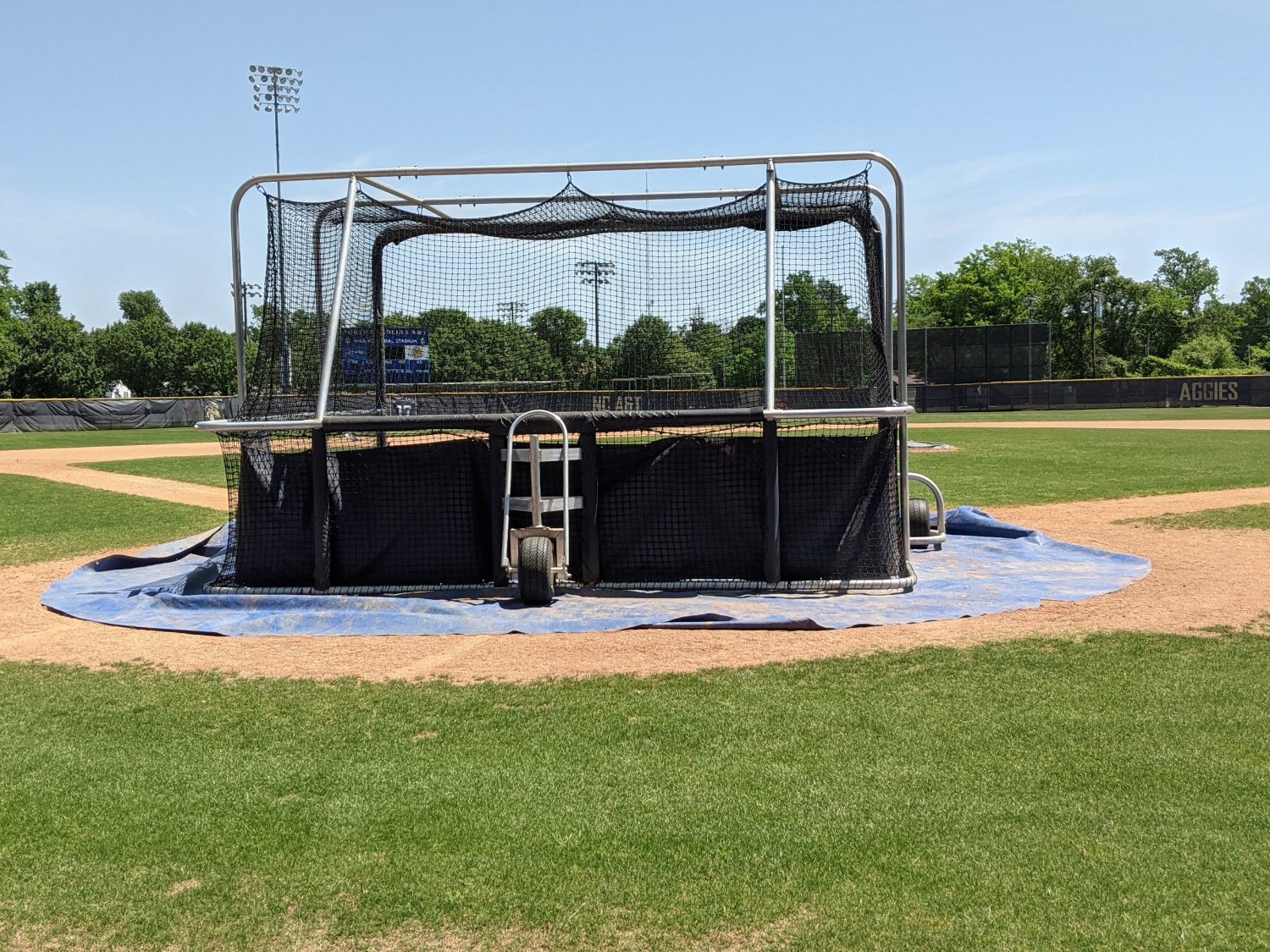
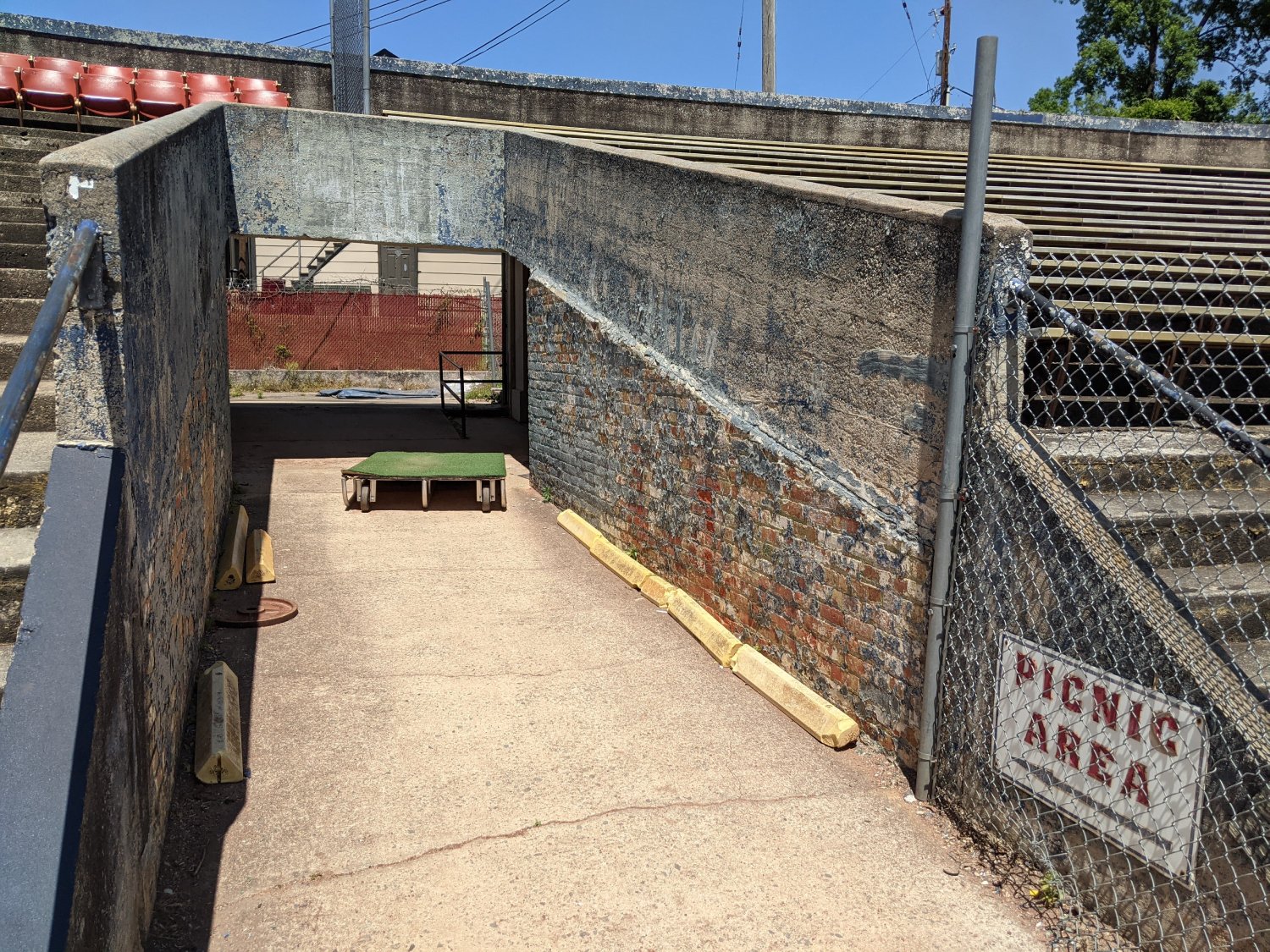
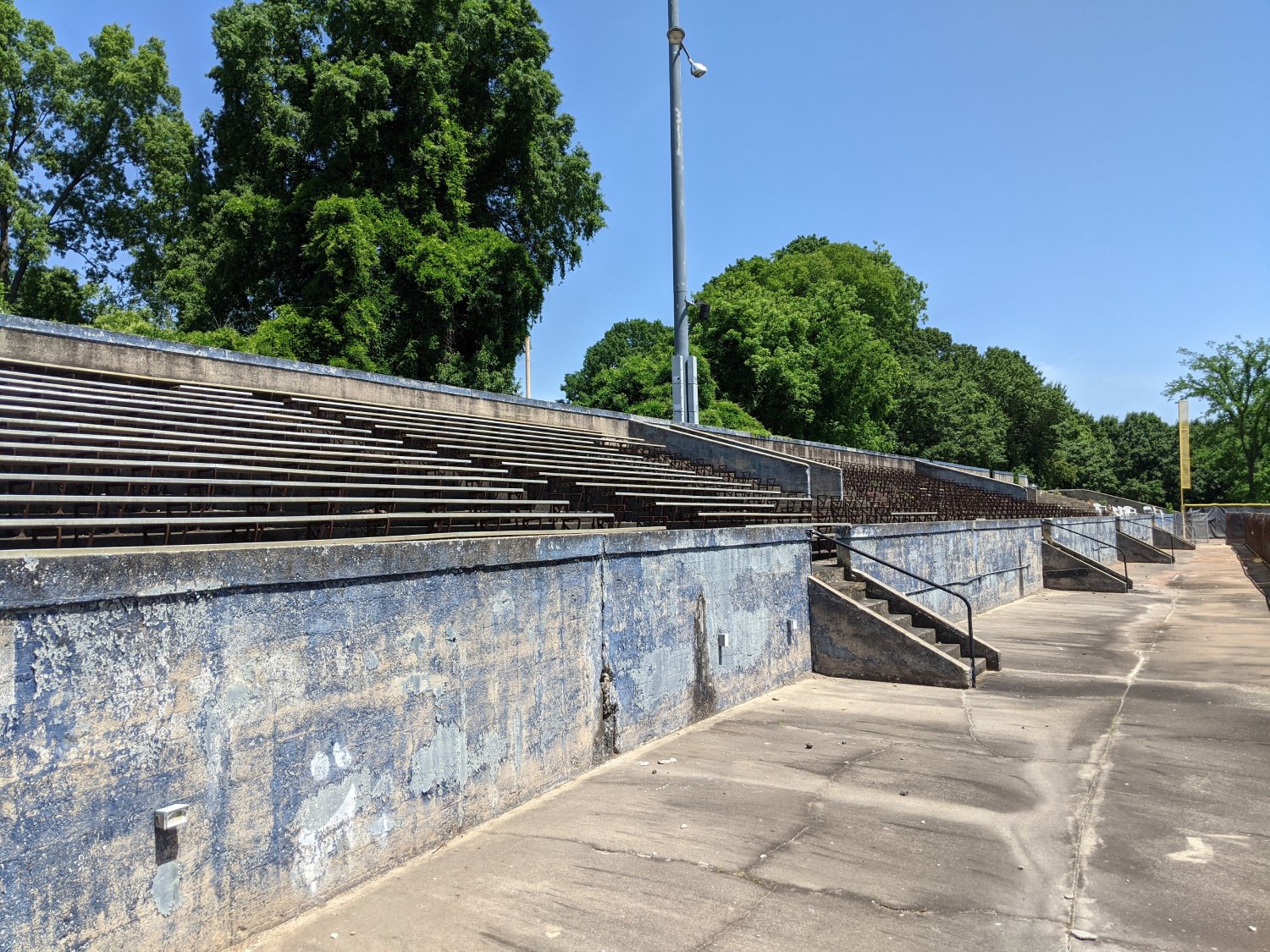
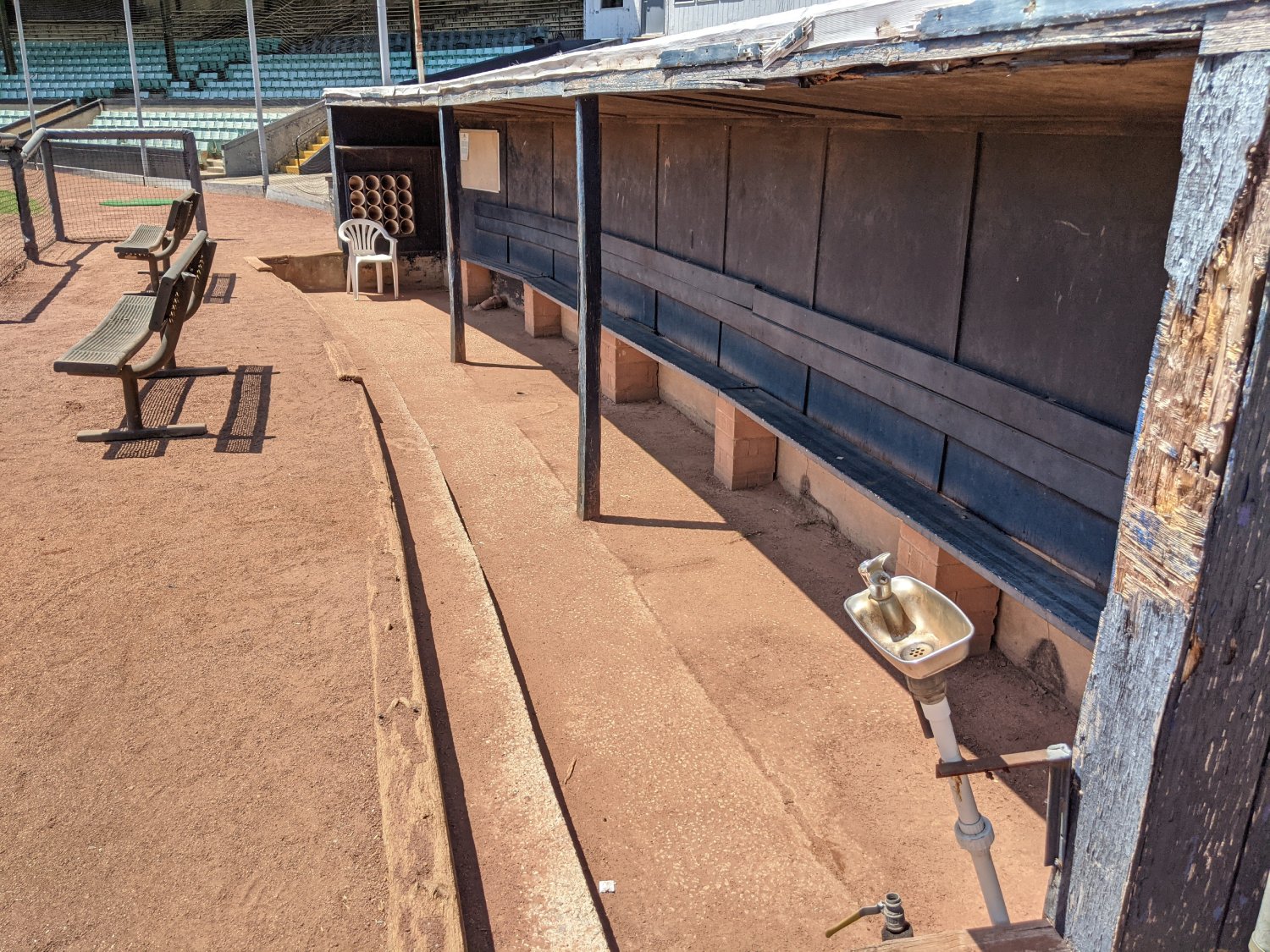
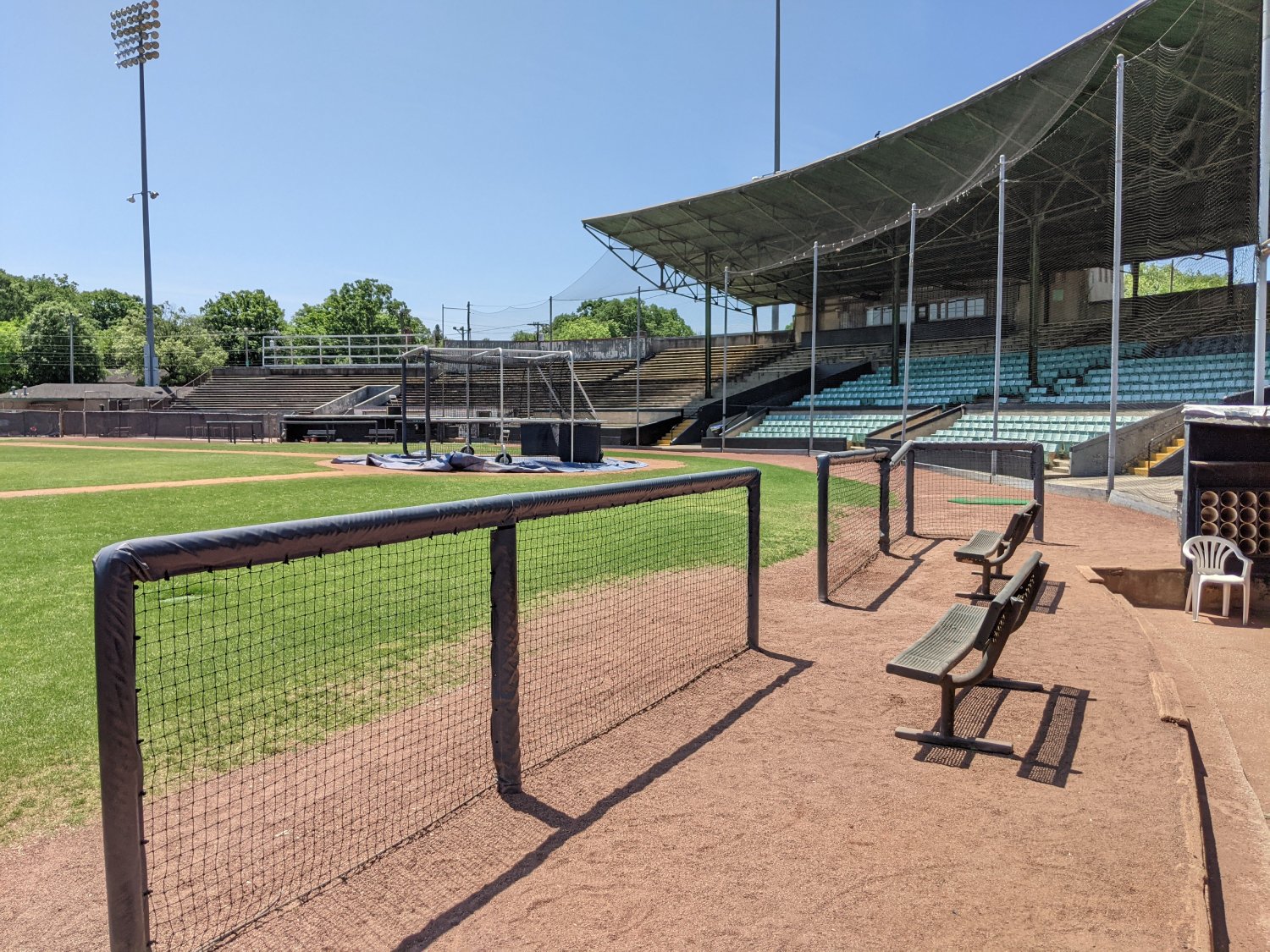
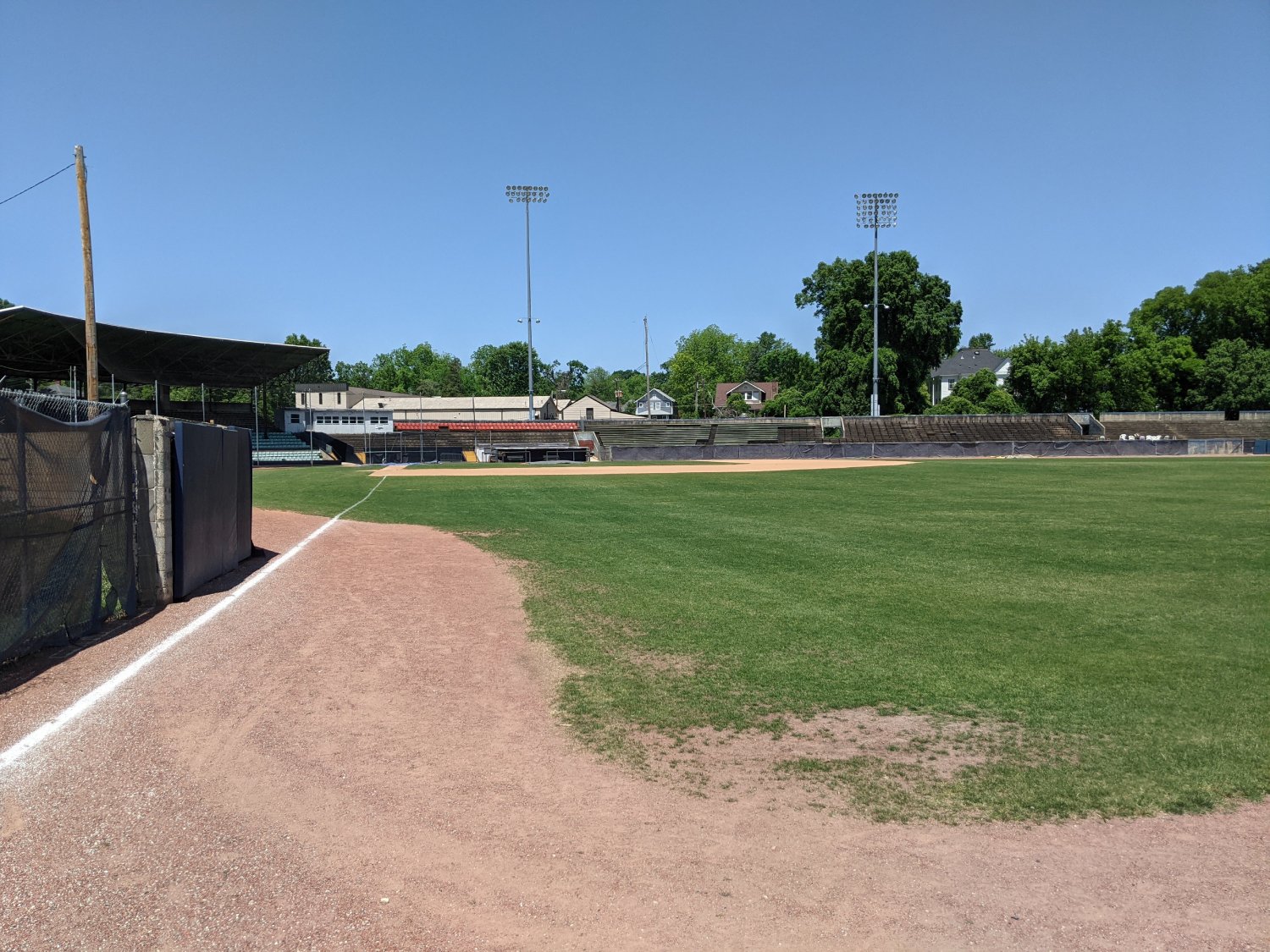
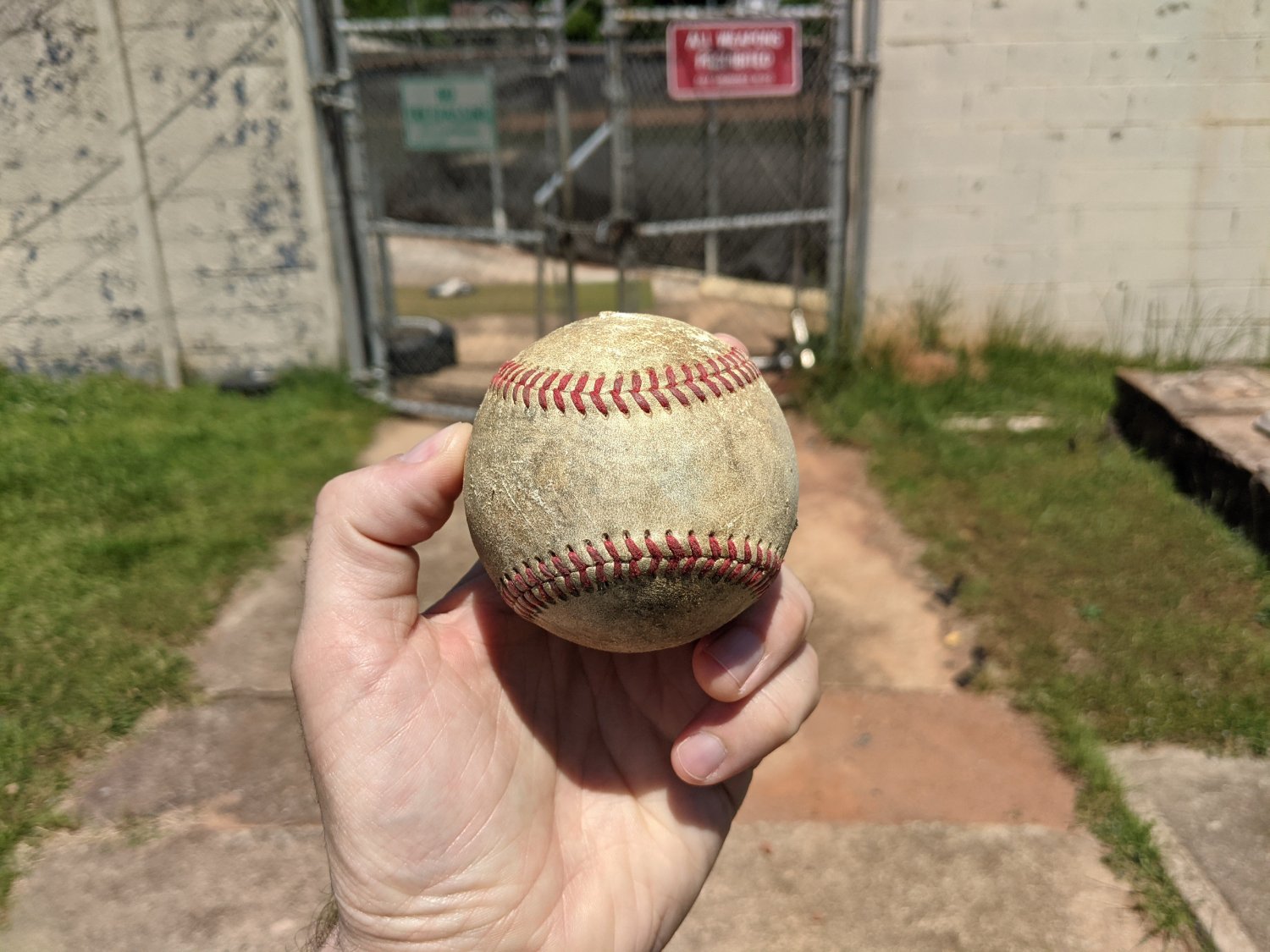
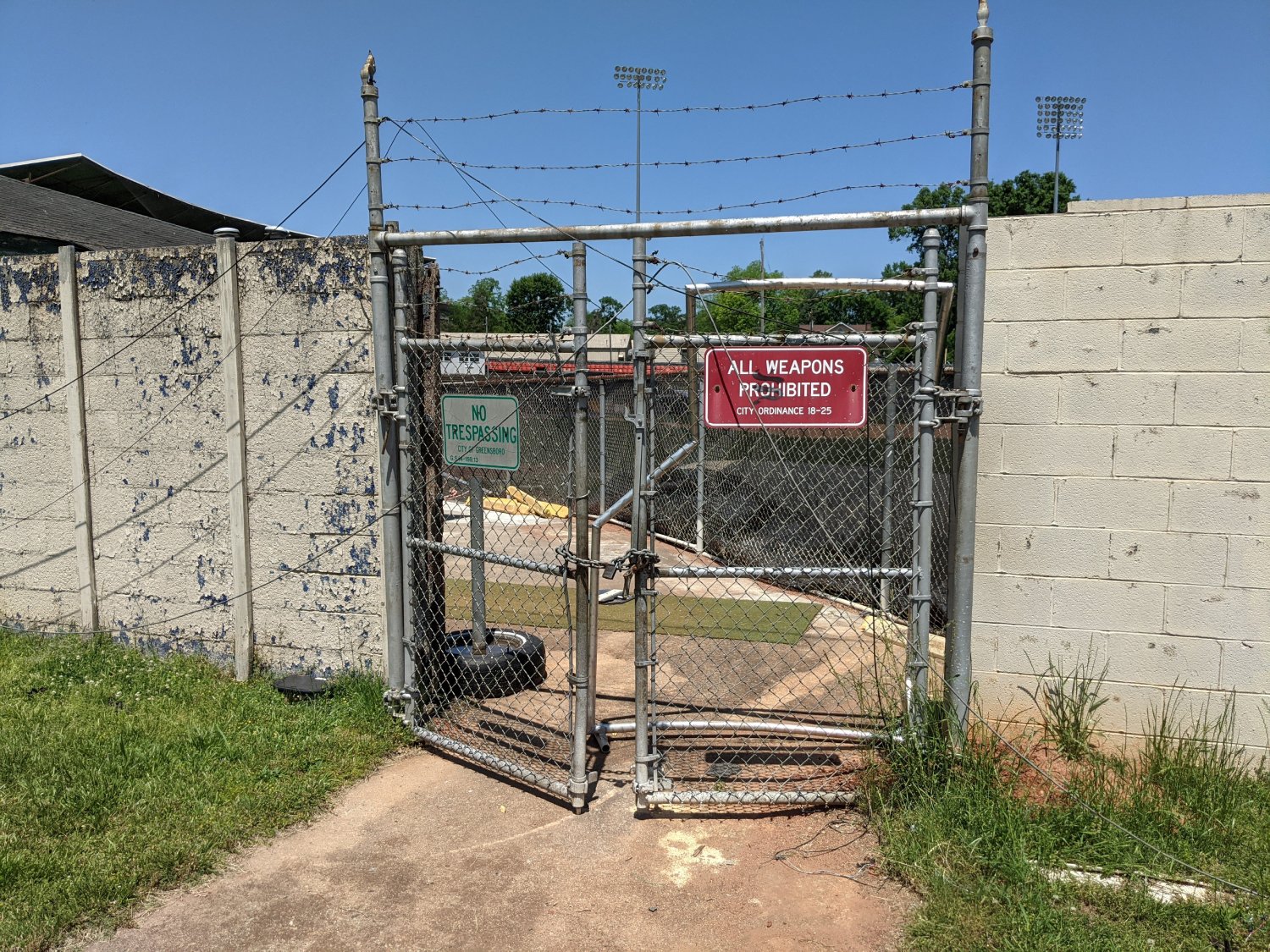
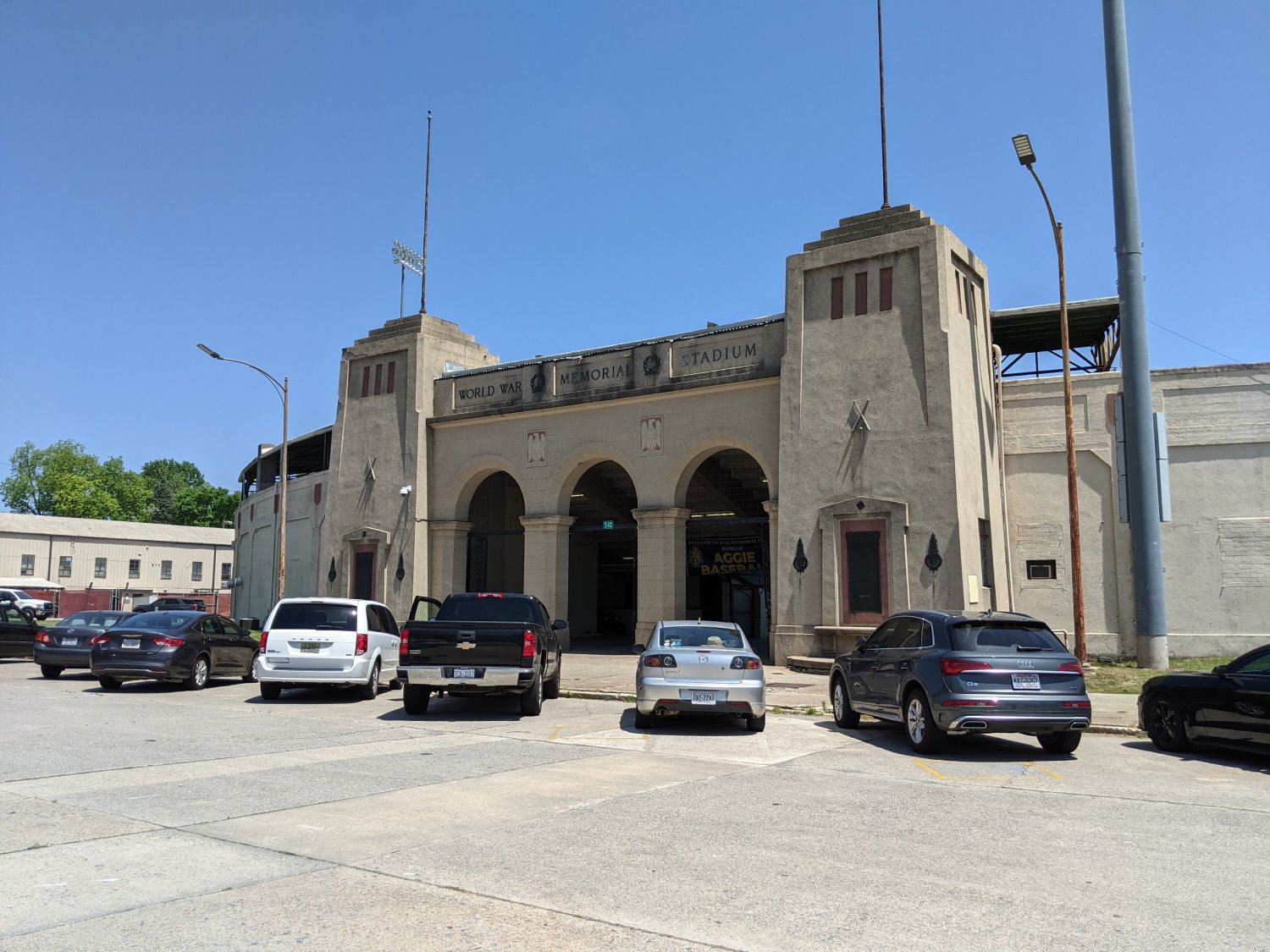
You must be logged in to post a comment.